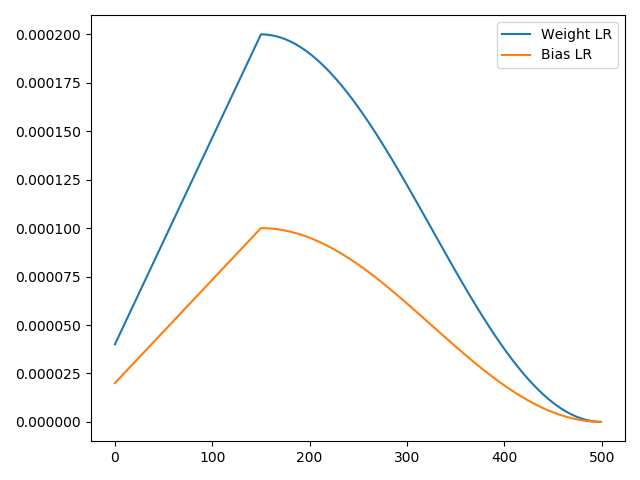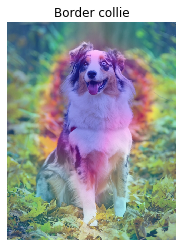Implementations of recent Deep Learning tricks in Computer Vision, easily paired up with your favorite framework and model zoo.
Holocrons were information-storage datacron devices used by both the Jedi Order and the Sith that contained ancient lessons or valuable information in holographic form.
Source: Wookieepedia
This package was developed using minimal dependencies (pytorch, torchvision).
User installation
pip install git+https://github.com/frgfm/Holocron@masterDeveloper installation
git clone https://github.com/frgfm/Holocron.git
pip install -e Holocron/Similar usage to torch.nn
import torch.nn as nn
from holocron.nn import Mish, NLReLU
# Both modules inherit from torch.nn.Module and can be used as such
model = nn.Sequential(nn.Conv2d(3, 64, (3, 3)),
Mish(),
nn.Conv2d(64, 128, (3, 3)),
NLReLU(),)- Res2Net: paper, based on the great implementation from gasvn
Using the models module, you can easily load torch modules or full models:
from holocron.models.res2net import res2net
# Load pretrained Res2net
model = res2net(depth=50, num_classes=10, pretrained=True).eval()Then, let's generate a random input image
import torch
# Get random image
img_tensor = torch.rand(1, 3, 600, 600) Now we can move them to GPU and forward them
# Move inputs and model to GPU
if torch.cuda.is_available():
model = model.cuda()
img_tensor = img_tensor.cuda()
# Forward
with torch.no_grad():
output = model(img_tensor)- Optimizer: LARS, Lamb, RAdam and customized versions (RaLars)
- Optimizer wrapper: Lookahead
- Scheduler: OneCycleScheduler
The optimizer wrapper can be used on any torch.optim.optimizer.Optimizer object
from torchvision.models.resnet import resnet50
from holocron.optim import RaLars
model = resnet50()
# Common usage of optimizer
optimizer = RaLars(model.parameters(), lr=3e-4)
# Wrap it with Lookahead
optimizer = Lookahead(optimizer, sync_rate=0.5, sync_period=6)
for epoch in range(10):
# Train for an epoch
for input, target in dataset:
optimizer.zero_grad()
output = model(input)
loss = loss_fn(output, target)
loss.backward()
optimizer.step()
val_loss = validate(...)You can use the OneCycleScheduler as follows:
from torchvision.models.resnet import resnet50
from torch.optim import Adam
from holocron.optim.lr_scheduler import OneCycleScheduler
model = resnet50()
# Let's have different LRs for weight and biases for instance
bias_params, weight_params = [], []
for n, p in model.named_parameters():
if n.endswith('.bias'):
bias_params.append(p)
else:
weight_params.append(p)
# We pass the parameters to the optimizer
optimizer = Adam([dict(params=weight_params, lr=2e-4), dict(params=bias_params, lr=1e-4)])
steps = 500
scheduler = OneCycleScheduler(optimizer, steps, cycle_momentum=False)
# Let's record the evolution of LR in each group
lrs = [[], []]
for step in range(steps):
for idx, group in enumerate(optimizer.param_groups):
lrs[idx].append(group['lr'])
# Train your model and perform optimizer.step() here
scheduler.step()
# And plot the result
import matplotlib.pyplot as plt
plt.plot(lrs[0], label='Weight LR'); plt.plot(lrs[1], label='Bias LR'); plt.legend(); plt.show()- Activation mapper: Discriminative Localization
The class activation map (CAM) extractor can be used as follows:
import requests
from PIL import Image
import matplotlib.pyplot as plt
from torchvision.models import resnet50
from torchvision.transforms import transforms
from torchvision.transforms.functional import to_pil_image
from holocron.utils import ActivationMapper, overlay_mask
# Pretrained imagenet model
model = resnet50(pretrained=True).eval()
# Specify layer to hook and fully connected
last_conv_layer = 'layer4'
fc_layer = 'fc'
# Hook the corresponding layer in the model
cam = ActivationMapper(model, last_conv_layer, fc_layer)
# Get a dog image
URL = 'https://www.woopets.fr/assets/races/000/030/mobile/berger-australien.jpg'
response = requests.get(URL)
file_name = URL.split('/')[-1]
with open(file_name, 'wb') as f:
f.write(response.content)
# Forward an image
pil_img = Image.open(file_name, mode='r').convert('RGB')
preprocess = transforms.Compose([
transforms.Resize((224,224)),
transforms.ToTensor(),
transforms.Normalize([0.485, 0.456, 0.406], [0.229, 0.224, 0.225])
])
img_tensor = preprocess(pil_img)
out = model(img_tensor.unsqueeze(0))
# Select the class index
classes = {int(key):value for (key, value)
in requests.get('https://s3.amazonaws.com/outcome-blog/imagenet/labels.json').json().items()}
class_idx = 232
# Use the hooked data to compute activation map
activation_maps = cam.get_activation_maps([class_idx])
# Convert it to PIL image
# The indexing below means first image in batch and first requested class
heatmap = to_pil_image(activation_maps[0, 0], mode='F')
# Plot the result
img = Image.open(file_name, mode='r').convert('RGB')
result = overlay_mask(img, heatmap)
plt.imshow(result); plt.axis('off'); plt.title(classes.get(class_idx)); plt.tight_layout; plt.show()The full package documentation is available here for detailed specifications. The documentation was built with Sphinx using a theme provided by Read the Docs
Regarding issues, use the following format for the title:
[Topic] Your Issue name
Example:
[models resnet] Add spectral normalization option



